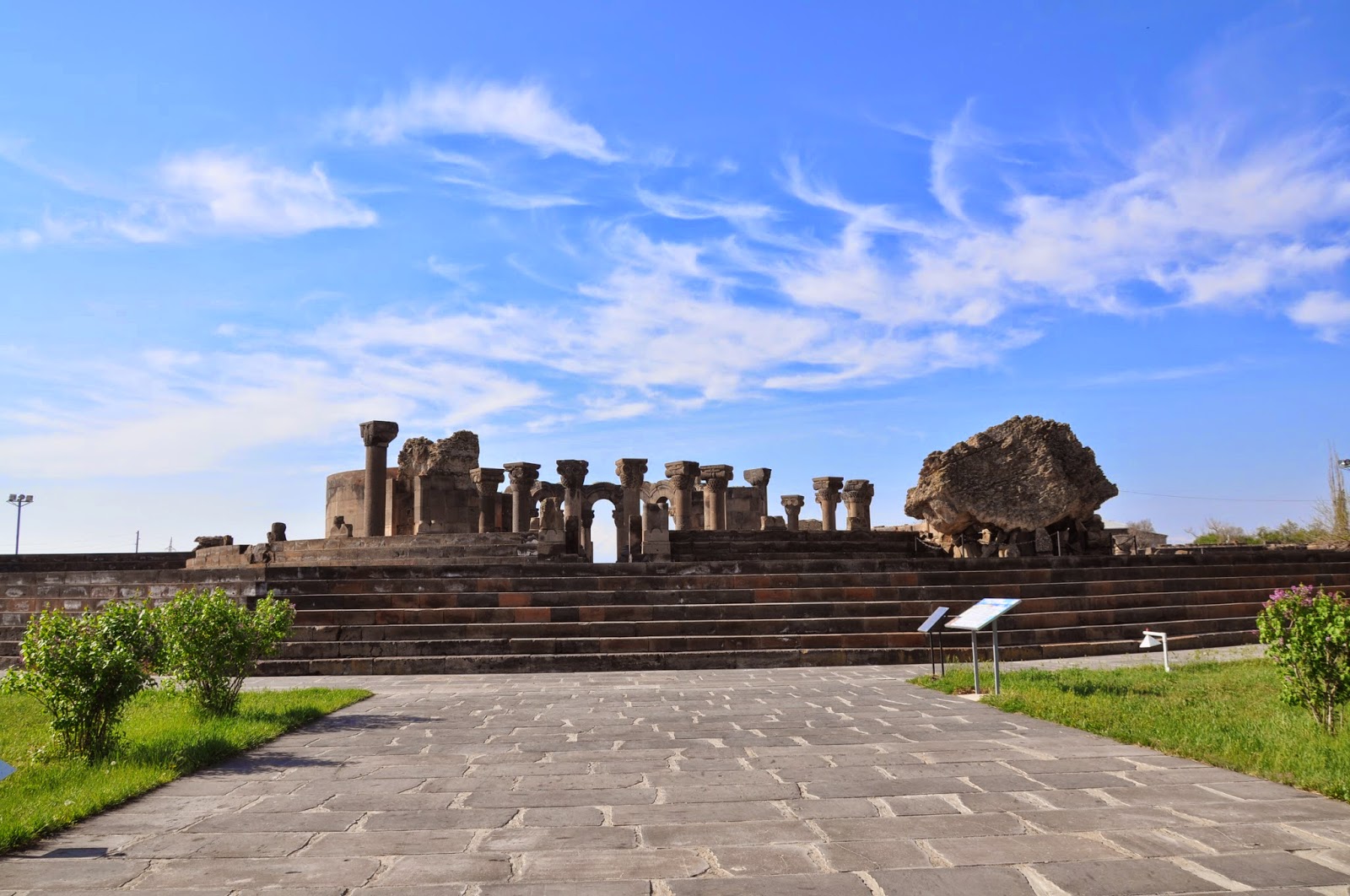I reached Paris Orly Airport on the 15th of April late in the evening, having had to make my way to Charles de Gaule Airport the following morning so as to meet the local travel agent who was supposed to hand me the necessary documentation for the circuit.
The Air France flight heading to Yerevan was mostly packed with foreigners and although I had the idea that Armenia wasn't such a tourist destination, I would soon be told that it has been recently sought by French, German and Israelian tourists with an increasing number of Spanish and Japanese.

Upon having gone through the required formalities at the Zvartnots International Airport I met the guide and the other people in the group before having been driven to the hotel where we would be having our first meal on Armenian territory and spend the night prior to the beginning of the "discovery" of the Armenian "treasures" circuit.
I was certainly tired because soon after having had the welcoming dinner at the hotel I walked into my hotel room and fell asleep almost immediately not having woken up until the following morning's wake up call.
Our first visit was what is left of the 7th century Zvartnots Cathedral in the Echmiadzin area. This UNESCO listed complex of structures, whose name stands for "Vigil forces" or "Celestial Angels" dedicated to Saint Gregory is considered of extreme architectural importance because of the originality of its composition recognised as being different in appearance from the ancient Byzantine structures of this kind.
The building is said to have consisted of three polyhedrons crowned with a cone shape cupola with the interior central part having the shape of a tetraconch surrounded by a two-storey gallery fenced on the outer side by a circular wall and on the inner side by an open arcade of apses.
The building is said to have consisted of three polyhedrons crowned with a cone shape cupola with the interior central part having the shape of a tetraconch surrounded by a two-storey gallery fenced on the outer side by a circular wall and on the inner side by an open arcade of apses.

Standing out among the sculptural ornamentation patterns, mostly cut in high relief depicting vines, stylized leaves and branches with pomegranates were interior column capitols shaped as wicker baskets with volutes and a cross or a monogram (with letters standing for "Nerses" and Catholicos, referring to the Catholicos Nerses III).




Some columns were decorated with figures of rampant eagles symbolizing the firmament.


In the area of the bottom polyhedron there were half-length representations of men with building tools in their hands, which according to some researchers might have been the portraits of the builders or founders of the temple depending on the individual facial features, postures and clothes.





Despite being in ruins the remnants of this temple are still impressive and do partly reflect its initial grandeur and artistic splendour, meant to have been behind the whole idea of its construction (so as to suppress the one attributed to the Echmiadzin Cathedral).


















No comments:
Post a Comment